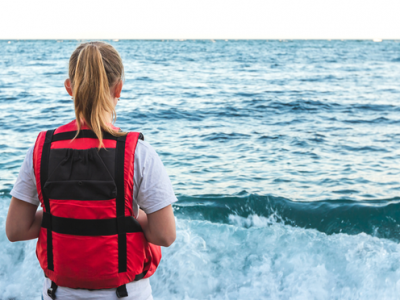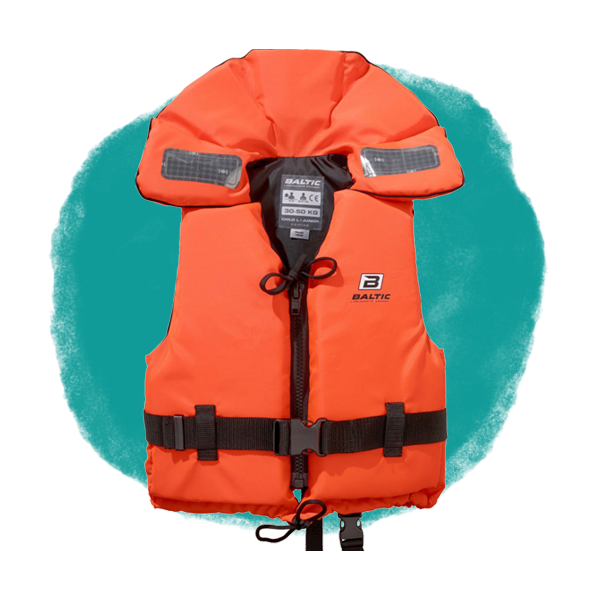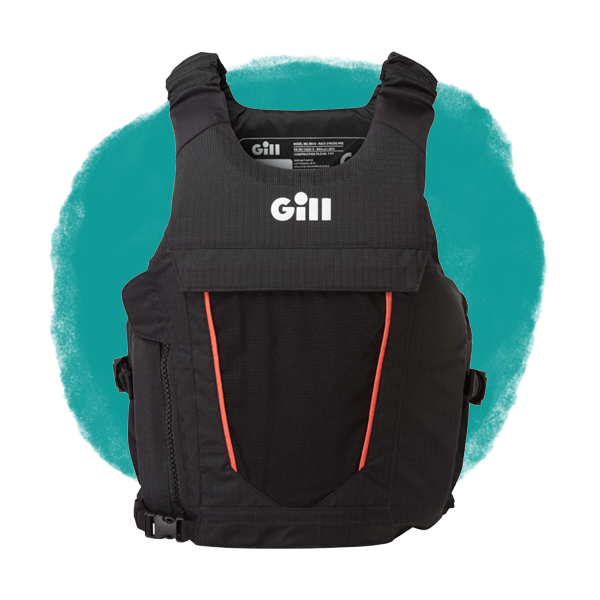Do I need a Life Jacket or a Buoyancy Aid?
When should you use a buoyancy aid instead of a life jacket?
In simple terms, a buoyancy aid is to help you swim whereas a life jacket is designed to keep you afloat without the need for swimming. However, it is important to note that not all life jackets are the same and some are not guaranteed to protect you when in rough water conditions. Life jacket buoyancy is measured in Newtons (N) of which the ratings are relative to the weight of the intended user. Ten Newtons equal 1kg of flotation, therefore, human buoyancy means that all adults will have a net weight of just 5KG no matter how light or heavy they are. Therefore, you don’t need more buoyancy than any other adult.

When not to wear a buoyancy aid?
Buoyancy aids should only be worn if you are a competent swimmer, in sheltered waters or where there is safety cover at hand. Children and anyone who can not swim should wear a life jacket.
Newton Ratings*In order of least buoyant.
Buoyancy Aids
50N
Dinghy Sailing
Kayak & Canoeing
Paddle Boarding
Kite Surfing
Only Suitable For Competent Swimmers

Life Jackets
100N
Dinghy Sailing
Sportsboat
Powerboat
Swimmers
Non-swimmers
In Inshore & Coastal Waters

150N
Dinghy Sailing
Sportsboat
Powerboat
Swimmers
Non-swimmers

275N
Dinghy Sailing
Sportsboat
Powerboat
Swimmers
Non-swimmers

Newton Ratings
50N: Foam buoyancy aids are rated 50N and are only suitable for competent swimmers and should be used in sheltered water where help is close at hand. 50N life jackets only provide support to conscious people who can help themselves.
100N: Life jackets rated 100N are suitable for swimmers and non-swimmers in inshore & coastal waters. They give a reasonable assurance of safety from drowning in relatively calm waters. This particular rating does not guarantee to self-right an unconscious user and should not be expected to protect the airway in rough waters.
150N: 150N rated life jackets are for swimmers and non-swimmers and are for use in all but the most severe conditions. These particular life jackets give reasonable assurance of safety from drowning for people who are not fully capable of helping themselves.
275N: Life jackets which are rated 275N are the most buoyant, for swimmers and non-swimmers. This particular rating is a high-performance jacket for offshore and severe conditions when maximum protection is required. While they cannot be guaranteed to self-right an unconscious user, this particular life jacket will provide great buoyancy in the majority of cases.

What to look for when buying a life jacket?
Foam Life Jackets or Buoyancy Aids: Foam life jackets or also known as buoyancy aids do not inflate. However, the buoyancy comes from the foam and can be used in sheltered waters, this particular type is generally used by children.
Manual Life Jackets: Manual life jackets inflate by pulling a tag upon entering the water. This, in turn, pushes a firing pin into the CO2 canister ensuring inflation. Manual life jackets are not suitable is the wearer is knocked unconscious.
Automatic Life Jackets: Automatic life jackets will inflate when the firing system gets wet. This particular type of life jacket operates using small pellets and bobbins. Once the pellets make contact with water, they dissolve instantly, releasing a spring which pushes a firing pin into the gas canister.
Hammar Life Jacket: A hammer life jacket will inflate automatically. Although similar to automatic life jackets, the hammer life jacket is trigged by the water pressure. The pellet is protected by a case which only lets the water in once below the surface and fully submerged. This means the hammer life jacket is less likely to trigger by accident in adverse weather conditions.
– Your life jacket must carry the CE mark
– The buoyancy rating must be appropriate for your chosen activity
– The life jacket must have one or two crotch straps, to ensure it does not rise over your head when it inflates
– Reflective tape should be a feature as it allows to stay visible when hit by a searchlight
– Spray hoods are a good feature as it protects your face and airway
– Some life jackets come with attachable lights for attracting attention in poor lighting
– Some life jackets come with built-in harnesses so you can secure yourself onto the boat





